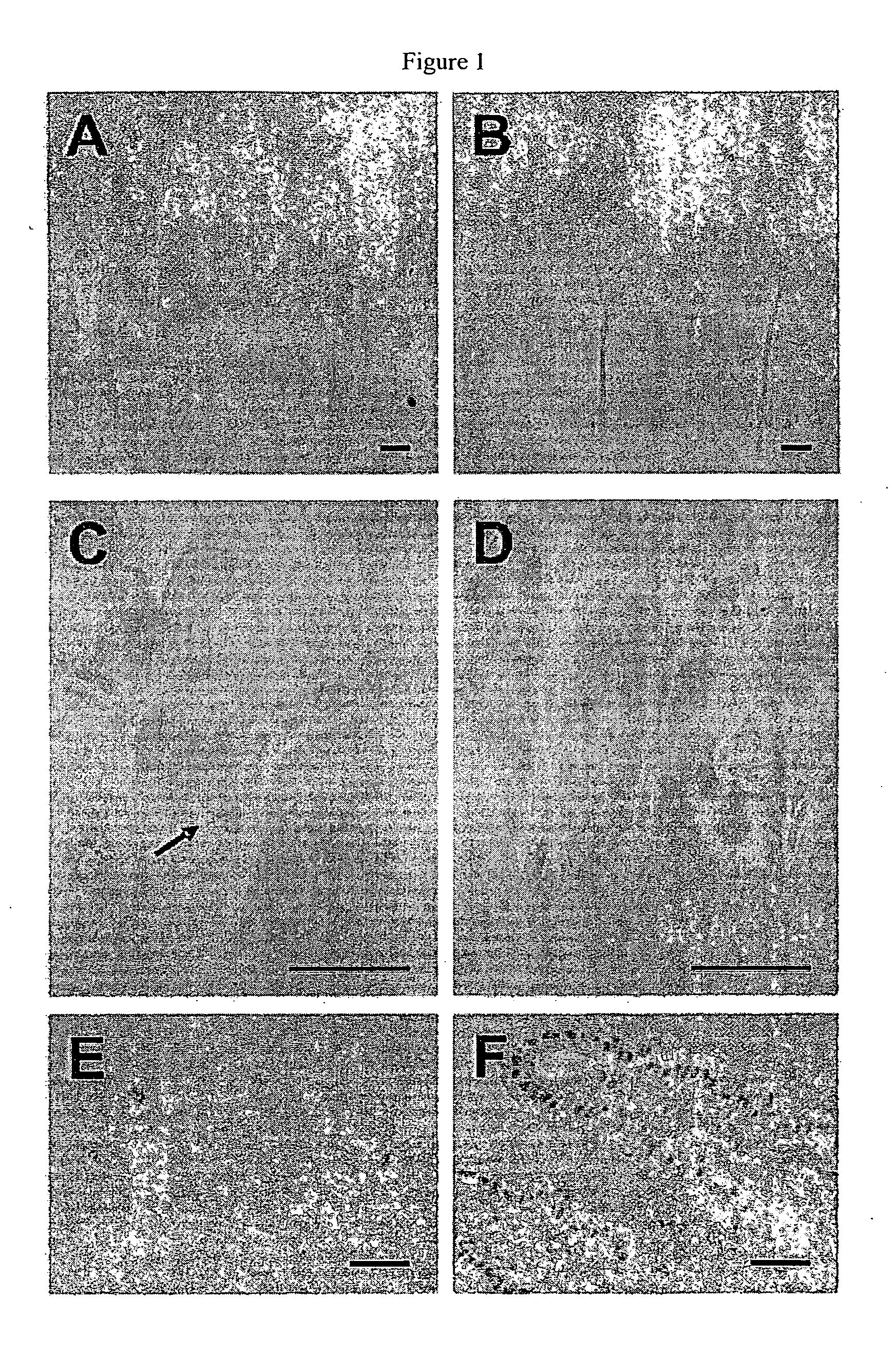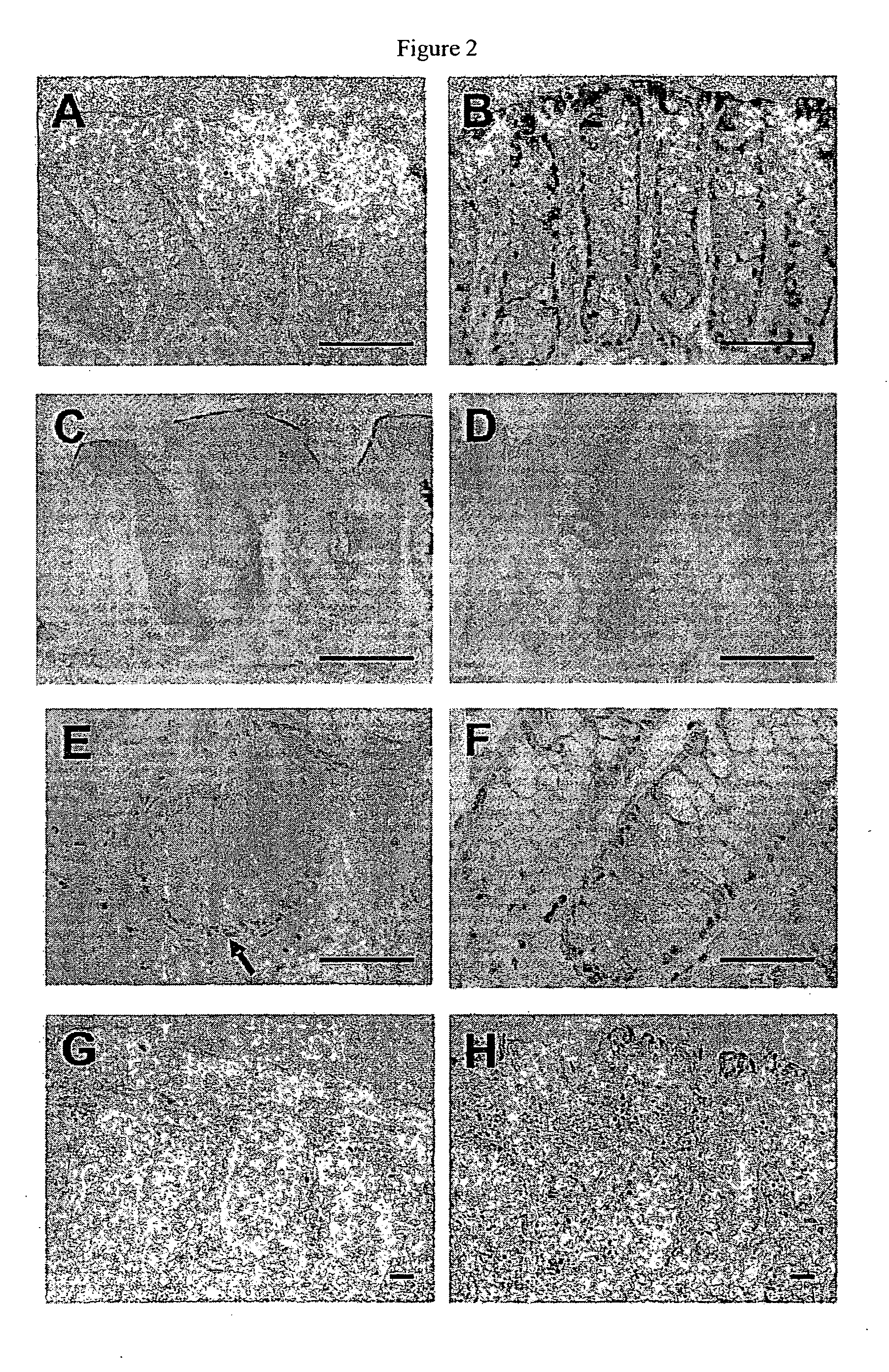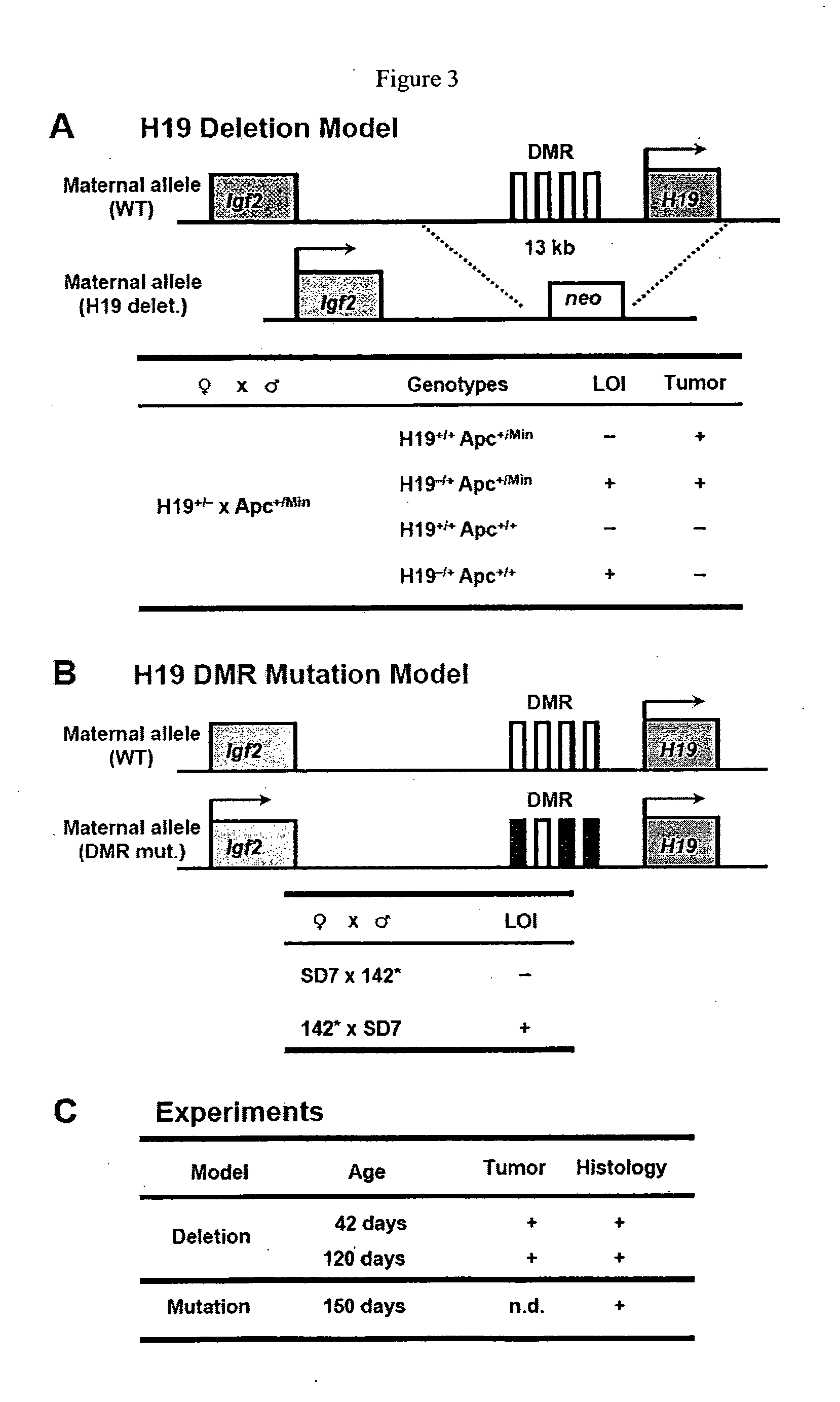Methods of screening for cell proliferation or neoplastic disorders
a cell proliferation or neoplastic disorder technology, applied in the field of screening for risk or or presence of neoplastic disorders, can solve problems such as the activation of normally silent alleles of growth-promoting genes, and achieve the effect of preventing or inhibiting a cell proliferation or neoplastic disorder, preventing or inhibiting an increase in the number of undifferentiated cells
- Summary
- Abstract
- Description
- Claims
- Application Information
AI Technical Summary
Benefits of technology
Problems solved by technology
Method used
Image
Examples
examples
[0133] A mouse model was created to investigate the mechanism by which LOI of IGF2 contributes to intestinal tumorigenesis. Previous analyses of mouse models by other groups have shown that Igf2 is activated more than 25-fold in pancreatic tumors induced by the SV40 large T antigen (Christofori, et al., Nat. Genet. 10, 196 (1995)) and that forced overexpression of Igf2 causes intestinal tumor formation and hyperproliferation of crypt epithelium (Hassan and Howell, Cancer Res. 60, 1070 (2000); Bennett, et al., Development 130, 1079 (2003)). The model provided herein was designed to mimic the human situation, where LOI causes only a modest increase in IGF2 expression. Imprinting of Igf2 is regulated by a differentially methylated region (DMR) upstream of the nearby untranslated H19 gene. Deletion of the DMR leads to biallelic expression (LOI) of Igf2 in the offspring when the deletion is maternally inherited (FIG. 3). To model intestinal neoplasia, we used Min mice with an Apc mutatio...
PUM
| Property | Measurement | Unit |
|---|---|---|
| areas | aaaaa | aaaaa |
| temperature | aaaaa | aaaaa |
| microscopy | aaaaa | aaaaa |
Abstract
Description
Claims
Application Information
 Login to View More
Login to View More - R&D
- Intellectual Property
- Life Sciences
- Materials
- Tech Scout
- Unparalleled Data Quality
- Higher Quality Content
- 60% Fewer Hallucinations
Browse by: Latest US Patents, China's latest patents, Technical Efficacy Thesaurus, Application Domain, Technology Topic, Popular Technical Reports.
© 2025 PatSnap. All rights reserved.Legal|Privacy policy|Modern Slavery Act Transparency Statement|Sitemap|About US| Contact US: help@patsnap.com



